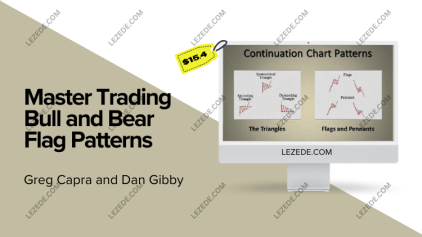Free Download Symmetry Wave Theory by Michael Gur – Includes Verified Content:
An Objective Approach to Market Analysis
Michael Gur’s Symmetry Wave Theory offers a refreshing alternative to subjective models like the Elliott Wave Theory. Where Elliott Wave often requires interpretive guesswork, Gur’s method emphasizes objectivity and clarity, providing traders with a consistent structure for analyzing price movements. This structure is especially beneficial for traders seeking logical, rule-based systems that reduce emotional bias.
The Role of Average True Range in Gur’s System
A major innovation in Gur’s methodology is the central use of Average True Range (ATR). ATR helps traders define realistic profit targets and protective stop-loss levels based on current market volatility. This dynamic approach allows traders to adapt strategies in real time, making it a strong tool for volatile environments where rigid plans often fail.
Benefits of the Symmetry Wave Trading Method
Traders have highlighted several advantages of Gur’s approach:
-
Accessibility for Beginners: Gur presents his strategies with clear visuals and simple explanations, making them approachable for those new to technical analysis.
-
Consistent Price Labeling: Unlike Elliott Wave’s ambiguous labeling, Gur’s symmetrical method maintains logical consistency across timeframes.
-
Improved Risk Management: By leveraging ATR, traders can better manage risk exposure and improve their decision-making under pressure.
These features help traders develop confidence in their analysis and stay grounded during volatile market conditions.
Common Criticisms and Limitations
Despite its strengths, the Symmetry Wave Theory has attracted critique from seasoned analysts:
-
Oversimplification of Elliott Wave Theory: Some argue that Gur’s criticism of Elliott Wave shows a limited understanding of its advanced applications.
-
Lack of Depth: Critics point out that while Gur offers a practical structure, the method may lack the analytical depth of more established systems.
-
Repetition of Flaws: Ironically, some of the very flaws Gur accuses Elliott Wave of—like overgeneralization—appear in his own methodology, according to detractors.
These critiques suggest the method may be best suited for traders seeking clarity over complexity, rather than a deep dive into layered market behavior.
Symmetry Wave vs. Elliott Wave: Key Differences
| Feature | Symmetry Wave Theory | Elliott Wave Theory |
|---|---|---|
| Objectivity | High – Clear labeling | Low – Subjective interpretations |
| Use of ATR | Core component | Rarely used |
| Accessibility | Beginner-friendly | Requires advanced learning |
| Framework Complexity | Simple and structured | Complex and nuanced |
| Depth of Theory | Criticized for being surface-level | Rich and multi-layered |
This comparison highlights how Gur’s method prioritizes simplicity and adaptability, while Elliott Wave focuses on theoretical completeness and fractal structures.
Final Verdict: Is Gur’s Method Right for You?
Michael Gur’s Symmetry Wave Theory is ideal for traders who value clarity, repeatability, and modern volatility tools like ATR. While it may not match the depth of more established theories, its practical application and structured format make it appealing to many traders—especially those frustrated with subjective analysis.
For best results, traders should treat Gur’s method as a starting framework and refine it through real-world practice and personal insight. As with any trading strategy, adaptation and discipline are key to long-term success in evolving markets.











